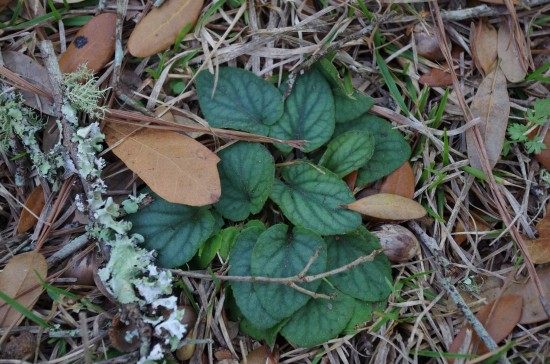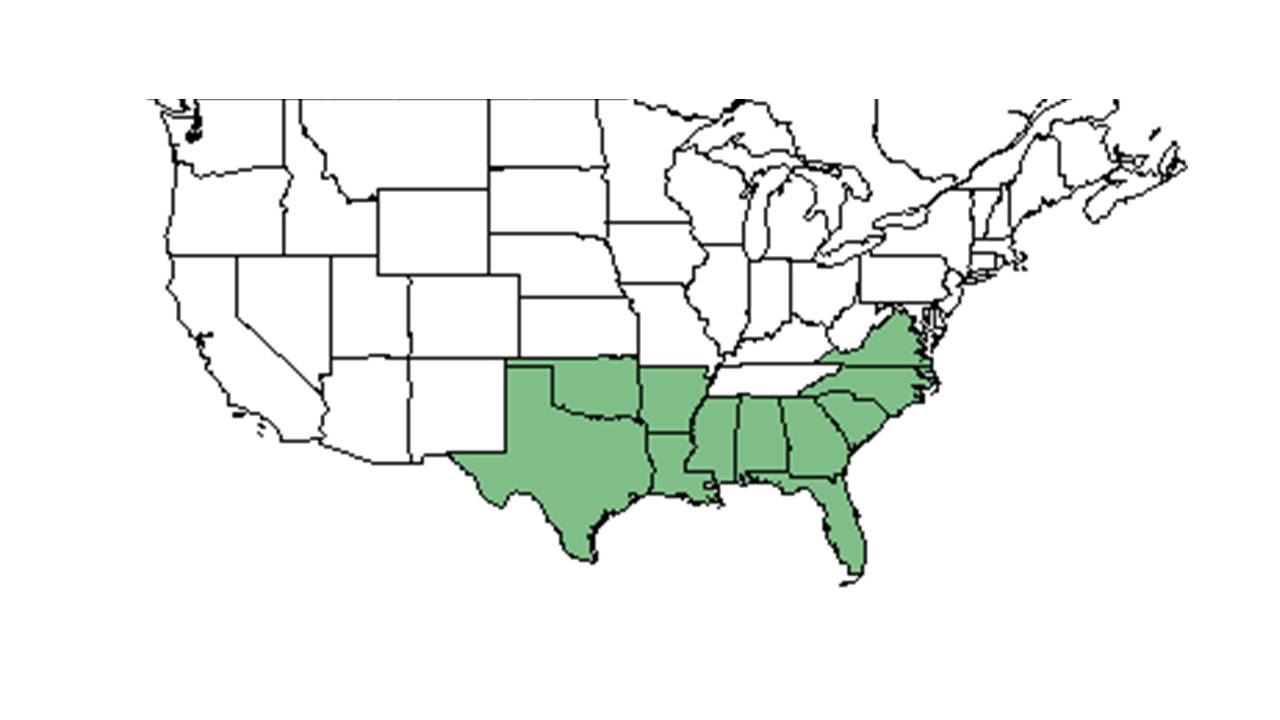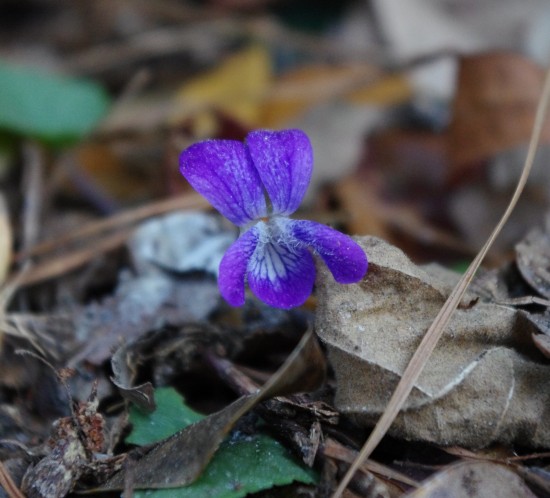Difference between revisions of "Viola villosa"
HaleighJoM (talk | contribs) (→Ecology) |
|||
| (28 intermediate revisions by 9 users not shown) | |||
| Line 3: | Line 3: | ||
{{taxobox | {{taxobox | ||
| name = Viola villosa | | name = Viola villosa | ||
| − | | image = | + | | image = Viol_vill.jpg |
| − | | image_caption = | + | | image_caption = Photo and permission granted by [http://ncwildflower.org/ncnps/index North Carolina Native Plant Society] |
| regnum = Plantae | | regnum = Plantae | ||
| divisio = Magnoliophyta – Flowering plants | | divisio = Magnoliophyta – Flowering plants | ||
| Line 15: | Line 15: | ||
| binomial_authority = Walter | | binomial_authority = Walter | ||
| range_map = VIOL_VILL_dist.jpg | | range_map = VIOL_VILL_dist.jpg | ||
| − | | range_map_caption = Natural range of ''Viola villosa'' from USDA NRCS [http:// | + | | range_map_caption = Natural range of ''Viola villosa'' from USDA NRCS [http://plants.usda.gov/core/profile?symbol=VIVI3 Plants Database]. |
}} | }} | ||
| + | |||
| + | Common names: Carolina violet, Southern woolly violet | ||
| + | ==Taxonomic notes== | ||
| + | Synonyms: ''V. rufotomentosa'' Small; ''V. simpsonii'' Munson.<ref>Weakley, A.S. 2015. Flora of the southern and mid-atlantic states. Working Draf of 21 May 2015. University of North Carolina at Chapel Hill, Chapel Hill, North Carolina.</ref> | ||
| + | |||
==Description== | ==Description== | ||
<!-- Basic life history facts such as annual/perrenial, monoecious/dioecious, root morphology, seed type, etc. --> | <!-- Basic life history facts such as annual/perrenial, monoecious/dioecious, root morphology, seed type, etc. --> | ||
| + | "Herbaceous, rhizomatous or stoloniferous perennials, or winter annuals. Leaves crenate or crenate-serrate, dissected, lobed or unlobed; petiolate; stipules conspicuous. Flowers zygomorphic, peduncles directly from the rhizome (acaulescent) or peduncles axillary (caulescent). Chasmogamous flowers with lateral petals often bearded, lower petal spurred; anthers usually seated in the throat, orange appendages conspicuous, lower stamens spurred; spurs fitting in to the spur of the corolla; styles usually clavate, variously shaped at the apex. Dates for ''Viola'', except ''V. pedata'', are for Chasmogamous flowering only, cleistogamous flowering and fruiting commence shortly after chasmogamous flowering and continues until frost. Hybrids are so numerous in this genus that space is not taken to list them."<ref name="Radford et al 1964">Radford, Albert E., Harry E. Ahles, and C. Ritchie Bell. Manual of the Vascular Flora of the Carolinas. 1964, 1968. The University of North Carolina Press. 727. Print.</ref> | ||
| + | |||
| + | "Plant acaulescent; rhizome elongate, stocky, usually more than 4 mm in diam., horizontal. Leaves evergreen, often lying flat on the ground, ovate to reniform, 2.5-7.5 cm long, crenate, densely pubescent on both surfaces, cordate; petioles 1-10 cm long, short pubescent; stipules membranous, lanceolate, to 1.5 cm long, entire to fimbriate, the fimbrillae often gland-tipped. Peduncles pubescent, usually shorter than the leaves, flowers mostly hidden. Chasmogamous flowers 1.5-2 cm broad, petals mostly directed forward, so that they rarely appear fully opened, bluish, lateral and spurred petals bearded; sepals 5-7 mm long, obtuse, deeps in the throat of the flower; style clavate. Cleistogamous flowers on short to 4 cm long, erect peduncles; sepals 3-5 mm long, obtuse, auricles to 1.5 mm long. Capsule 8-10 mm long, glabrous. Seeds dark brown, 1.6-1.8 mm long."<ref name="Radford et al 1964"/> | ||
| + | |||
==Distribution== | ==Distribution== | ||
==Ecology== | ==Ecology== | ||
===Habitat=== <!--Natural communities, human disturbed habitats, topography, hydrology, soils, light, fire regime requirements for removal of competition, etc.--> | ===Habitat=== <!--Natural communities, human disturbed habitats, topography, hydrology, soils, light, fire regime requirements for removal of competition, etc.--> | ||
| + | In the Coastal Plain in Florida and Georgia, ''V. villosa'' has been found in sandy soil in a semi-open area under oak and pine; upper slopes bordering a small stream; open pine woodlands; sandy loam under mature loblolly pines; sandy loam in short leaf pine.<ref name="FSU Herbarium">Florida State University Robert K. Godfrey Herbarium database. URL: [http://herbarium.bio.fsu.edu http://herbarium.bio.fsu.edu]. Last accessed: July 2015. Collectors: Loran C. Anderson, Robert K. Godfrey, Angus Gholson, Gary R. Knight, Donnie Humphrey, Robert Kral, Kathleen Brady. States and Counties: Florida: Gadsden, Jackson, Liberty, Madison. Georgia: Grady. Compiled by Tall Timbers Research Station and Land Conservancy.</ref> It has been found in disturbed habitats such as centipede lawns, cemeteries, and roadsides. It is associated with ''Viola esculenta.''<ref name="FSU Herbarium"/> | ||
| + | |||
===Phenology=== <!--Timing off flowering, fruiting, seed dispersal, and environmental triggers. Cite PanFlora website if appropriate: http://www.gilnelson.com/PanFlora/ --> | ===Phenology=== <!--Timing off flowering, fruiting, seed dispersal, and environmental triggers. Cite PanFlora website if appropriate: http://www.gilnelson.com/PanFlora/ --> | ||
| − | ===Seed dispersal=== | + | ''V. villosa'' has been observed to flower from January to April and fruit February and March.<ref name="FSU Herbarium"/<ref>Nelson, G. [http://www.gilnelson.com/ PanFlora]: Plant data for the eastern United States with emphasis on the Southeastern Coastal Plains, Florida, and the Florida Panhandle. www.gilnelson.com/PanFlora/ Accessed: 15 DEC 2016</ref> |
| − | ===Seed bank and germination=== | + | <!--===Seed dispersal===--> |
| − | ===Fire ecology=== <!--Fire tolerance, fire dependence, adaptive fire responses--> | + | <!--===Seed bank and germination===--> |
| − | ===Pollination=== | + | <!--===Fire ecology===--> <!--Fire tolerance, fire dependence, adaptive fire responses--> |
| − | === | + | <!--===Pollination===--> |
| − | ===Diseases and parasites=== | + | <!--===Herbivory and toxicology=== <!--Common herbivores, granivory, insect hosting, poisonous chemicals, allelopathy, etc.--> |
| − | ==Conservation and | + | <!--===Diseases and parasites===--> |
| − | == | + | |
| + | ==Conservation, cultivation, and restoration== | ||
| + | |||
| + | ==Cultural use== | ||
| + | The flowers can be candied, used in soups and baking. The roots are toxic and should be avoided.<ref> Fernald, et al. 1958. Edible Plants of Eastern North America. Harper and Row Publishers, New York.</ref> | ||
| + | |||
==Photo Gallery== | ==Photo Gallery== | ||
| + | <gallery widths=180px> | ||
| + | File: Viola_villosa_flower_NC-NativePlantSociety_IMGP0539.jpg | <center> ''Viola villosa'' flower <p> Photo and permission granted by [http://ncwildflower.org/ncnps/index North Carolina Native Plant Society] </gallery> | ||
==References and notes== | ==References and notes== | ||
Latest revision as of 17:27, 18 July 2022
| Viola villosa | |
|---|---|

| |
| Photo and permission granted by North Carolina Native Plant Society | |
| Scientific classification | |
| Kingdom: | Plantae |
| Division: | Magnoliophyta – Flowering plants |
| Class: | Magnoliopsida – Dicotyledons |
| Order: | Violales |
| Family: | Violaceae |
| Genus: | Viola |
| Species: | V. villosa |
| Binomial name | |
| Viola villosa Walter | |

| |
| Natural range of Viola villosa from USDA NRCS Plants Database. | |
Common names: Carolina violet, Southern woolly violet
Contents
Taxonomic notes
Synonyms: V. rufotomentosa Small; V. simpsonii Munson.[1]
Description
"Herbaceous, rhizomatous or stoloniferous perennials, or winter annuals. Leaves crenate or crenate-serrate, dissected, lobed or unlobed; petiolate; stipules conspicuous. Flowers zygomorphic, peduncles directly from the rhizome (acaulescent) or peduncles axillary (caulescent). Chasmogamous flowers with lateral petals often bearded, lower petal spurred; anthers usually seated in the throat, orange appendages conspicuous, lower stamens spurred; spurs fitting in to the spur of the corolla; styles usually clavate, variously shaped at the apex. Dates for Viola, except V. pedata, are for Chasmogamous flowering only, cleistogamous flowering and fruiting commence shortly after chasmogamous flowering and continues until frost. Hybrids are so numerous in this genus that space is not taken to list them."[2]
"Plant acaulescent; rhizome elongate, stocky, usually more than 4 mm in diam., horizontal. Leaves evergreen, often lying flat on the ground, ovate to reniform, 2.5-7.5 cm long, crenate, densely pubescent on both surfaces, cordate; petioles 1-10 cm long, short pubescent; stipules membranous, lanceolate, to 1.5 cm long, entire to fimbriate, the fimbrillae often gland-tipped. Peduncles pubescent, usually shorter than the leaves, flowers mostly hidden. Chasmogamous flowers 1.5-2 cm broad, petals mostly directed forward, so that they rarely appear fully opened, bluish, lateral and spurred petals bearded; sepals 5-7 mm long, obtuse, deeps in the throat of the flower; style clavate. Cleistogamous flowers on short to 4 cm long, erect peduncles; sepals 3-5 mm long, obtuse, auricles to 1.5 mm long. Capsule 8-10 mm long, glabrous. Seeds dark brown, 1.6-1.8 mm long."[2]
Distribution
Ecology
Habitat
In the Coastal Plain in Florida and Georgia, V. villosa has been found in sandy soil in a semi-open area under oak and pine; upper slopes bordering a small stream; open pine woodlands; sandy loam under mature loblolly pines; sandy loam in short leaf pine.[3] It has been found in disturbed habitats such as centipede lawns, cemeteries, and roadsides. It is associated with Viola esculenta.[3]
Phenology
V. villosa has been observed to flower from January to April and fruit February and March.[4]
Conservation, cultivation, and restoration
Cultural use
The flowers can be candied, used in soups and baking. The roots are toxic and should be avoided.[5]
Photo Gallery
Viola villosa flower Photo and permission granted by North Carolina Native Plant Society
References and notes
- ↑ Weakley, A.S. 2015. Flora of the southern and mid-atlantic states. Working Draf of 21 May 2015. University of North Carolina at Chapel Hill, Chapel Hill, North Carolina.
- ↑ 2.0 2.1 Radford, Albert E., Harry E. Ahles, and C. Ritchie Bell. Manual of the Vascular Flora of the Carolinas. 1964, 1968. The University of North Carolina Press. 727. Print.
- ↑ 3.0 3.1 Florida State University Robert K. Godfrey Herbarium database. URL: http://herbarium.bio.fsu.edu. Last accessed: July 2015. Collectors: Loran C. Anderson, Robert K. Godfrey, Angus Gholson, Gary R. Knight, Donnie Humphrey, Robert Kral, Kathleen Brady. States and Counties: Florida: Gadsden, Jackson, Liberty, Madison. Georgia: Grady. Compiled by Tall Timbers Research Station and Land Conservancy.
- ↑ Nelson, G. PanFlora: Plant data for the eastern United States with emphasis on the Southeastern Coastal Plains, Florida, and the Florida Panhandle. www.gilnelson.com/PanFlora/ Accessed: 15 DEC 2016
- ↑ Fernald, et al. 1958. Edible Plants of Eastern North America. Harper and Row Publishers, New York.
